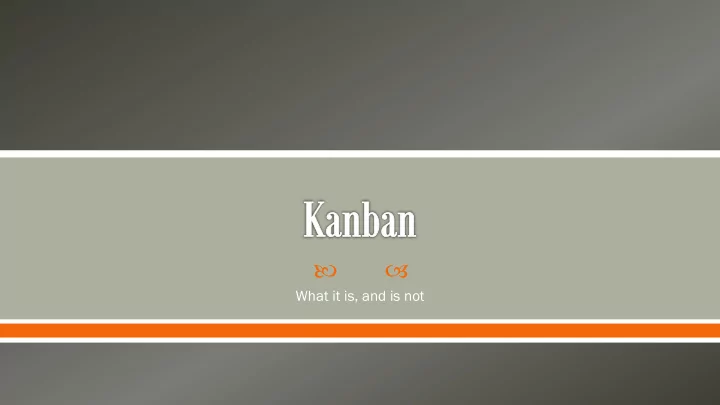

What it is, and is not
Kanban is a method for managing the creation of products with an emphasis on continual delivery while not overburdening the development team It’s origins are from JIT (Just in Time delivery) for manufacturing lines The fundamentals are based around continuous delivery o Think of an assembly line
Visualize sualize wha hat y t you ou do do t tod oday (w y (work orkflo flow): ): seeing all the items in context of each other can be very informative Li Limit mit th the e amou ount nt of of w work ork in progress ogress (W (WIP): IP): this helps balance the flow-based approach so teams don’t start and commit to too much work at once En Enha hance nce fl flow: w: when something is finished, the next highest thing from the backlog is pulled into play
Kanban an Scr crum um Pre-defined roles of Scrum master, No prescribed roles Product owner and team member Continuous Delivery Timeboxed sprints Work is pulled through the system Work is pulled through the system in (single piece flow) batches (the sprint backlog) Changes can be made at any time No changes allowed mid-sprint Cycle time Velocity More appropriate in operational More appropriate in situations environments with a high degree of where work can be prioritized in variability in priority batches that can be left alone https://resources.collab.net/agile-101/what-is-kanban
While popular, especially as a visualization of work and work-in-process, Kanban by itself is an incomplete process Teams will often build a Kanban board, and feel they have a process in place In a development cycle, Kanban is often combined with other development methodologies, giving rise to things like ‘Scrum - Ban’
Recommend
More recommend